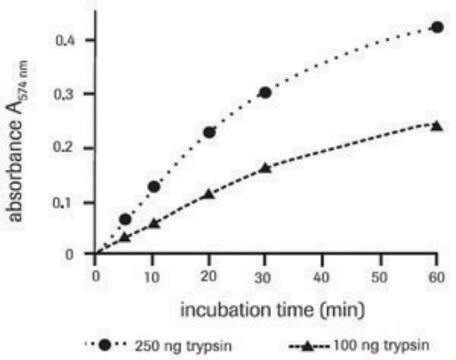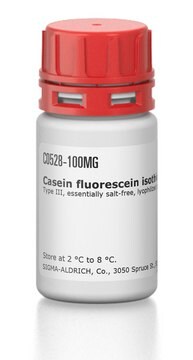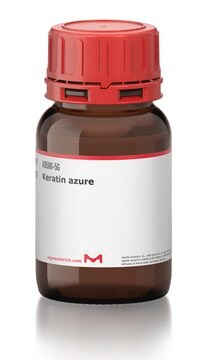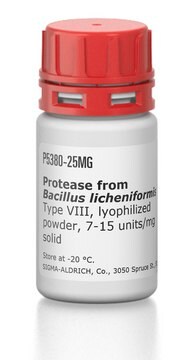194932
AZOCOLL Substrate, <50 Mesh
General proteolytic substrate.
Synonim(y):
AZOCOLL Substrate, <50 Mesh
Zaloguj sięWyświetlanie cen organizacyjnych i kontraktowych
About This Item
Polecane produkty
Poziom jakości
Postać
solid
producent / nazwa handlowa
Calbiochem®
warunki przechowywania
OK to freeze
protect from light
kolor
dark red
rozpuszczalność
aqueous buffer: soluble
water: soluble
Warunki transportu
ambient
temp. przechowywania
10-30°C
Opis ogólny
General proteolytic substrate. Provides a rapid and simple spectrophotometric method to detect the presence of proteases in aqueous solutions. As the insoluble substrate is cleaved by proteases, it releases a red dye into the surrounding buffer. Incubation of 50 mg AZOCOLL Substrate with 2 units of PRONASE Protease for 15 min yields an absorbance of greater than 1.0 at 520 nm.
This product has been discontinued.
General proteolytic substrate. Provides a rapid, simple method for the detection of proteases in aqueous solutions. Color yield (520 nm): >1.0; blank (520 nm, 50 mg/5 ml buffer, 10 minutes at 37°C, pH 7.0): <0.2. Mesh: <50 (minimum 80%).
General proteolytic substrate. Provides a rapid, simple method for the detection of proteases in aqueous solutions. Color yield (520 nm): >1.0; blank (520 nm, 50 mg/5 ml buffer, 10 minutes at 37°C, pH 7.0): <0.2. Mesh: <50 (minimum 80%).
Ostrzeżenie
Toxicity: Standard Handling (A)
Inne uwagi
Poilane, I., et al. 1998. Can. J. Microbiol. 44, 157.
Braganza, V.J., and Simmons, W.H. 1991. Biochemistry 30, 4997.
Moore, G.L. 1969. Anal. Biochem. 32, 122.
Braganza, V.J., and Simmons, W.H. 1991. Biochemistry 30, 4997.
Moore, G.L. 1969. Anal. Biochem. 32, 122.
Informacje prawne
CALBIOCHEM is a registered trademark of Merck KGaA, Darmstadt, Germany
Ta strona może zawierać tekst przetłumaczony maszynowo.
Kod klasy składowania
11 - Combustible Solids
Klasa zagrożenia wodnego (WGK)
WGK 3
Temperatura zapłonu (°F)
Not applicable
Temperatura zapłonu (°C)
Not applicable
Certyfikaty analizy (CoA)
Poszukaj Certyfikaty analizy (CoA), wpisując numer partii/serii produktów. Numery serii i partii można znaleźć na etykiecie produktu po słowach „seria” lub „partia”.
Masz już ten produkt?
Dokumenty związane z niedawno zakupionymi produktami zostały zamieszczone w Bibliotece dokumentów.
Nasz zespół naukowców ma doświadczenie we wszystkich obszarach badań, w tym w naukach przyrodniczych, materiałoznawstwie, syntezie chemicznej, chromatografii, analityce i wielu innych dziedzinach.
Skontaktuj się z zespołem ds. pomocy technicznej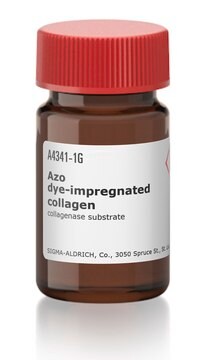
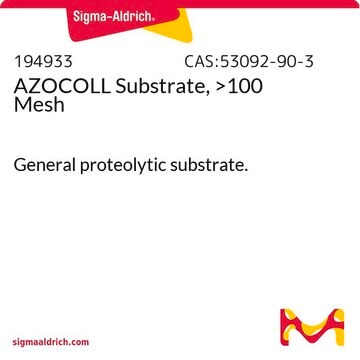
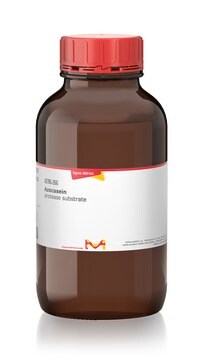

![N-[3-(2-Furyl)acryloyl]-Leu-Gly-Pro-Ala](/deepweb/assets/sigmaaldrich/product/structures/805/876/96b5fb57-71c8-4c6b-b5d2-fafe7374cd85/640/96b5fb57-71c8-4c6b-b5d2-fafe7374cd85.png)
